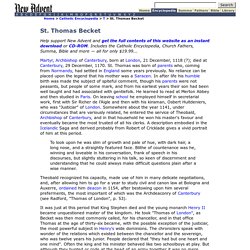

Courtly Love in the Middle Ages: Definition, Characteristics & Rules. Explore this lesson on courtly love, an essential concept to understanding relationships between men and women in medieval literature.

Learn the definition of courtly love, its connection with chivalry, the rules of courtly love, and discover examples of works that feature courtly love from the middle ages. Explore our library of over 10,000 lessons Click "next lesson" whenever you finish a lesson and quiz. Got It You now have full access to our lessons and courses. You're 25% of the way through this course! Way to go! Congratulations on earning a badge for watching 10 videos but you've only scratched the surface. You've just earned a badge for watching 50 different lessons. You have earned a badge for watching 20 minutes of lessons. You have earned a badge for watching 50 minutes of lessons. You have earned a badge for watching 100 minutes of lessons. You have earned a badge for watching 250 minutes of lessons.
You have earned a badge for watching 500 minutes of lessons. Courtly Love - World History in Context. One of the most commonly held, and perhaps most misunderstood, modern notions about the Middle Ages is the type of romantic or erotic love believed to have been practiced in the period, popularly referred to as "courtly love.

" Courtly love is a cluster of related ideas and sensibilities characterizing an extreme expression of romantic passion that was demonstrated frequently by characters in medieval literature, especially in courtly romances and the love lyrics of the French troubadours and the German minnesingers. The term "courtly love" was never used in medieval texts, although medieval authors and poets did use the term fin'amors (refined love) to describe the extremes of emotion experienced, often suffered, by male protagonists in romances and by the lover singing love songs to his beloved in the lyric tradition. But what exactly was the late medieval European phenomenon known popularly as "courtly love"? The knights and ladies at the aristocratic courts.
A. E. Thomas Becket. Help support New Advent and get the full contents of this website as an instant download or CD-ROM.

Includes the Catholic Encyclopedia, Church Fathers, Summa, Bible and more — all for only $19.99... St. Thomas Becket - Archbishop, Saint. History - Thomas Becket. The Life of Geoffrey Chaucer (c. 1343-1400) [Chaucer Biography] GEOFFREY CHAUCER, English poet.
![The Life of Geoffrey Chaucer (c. 1343-1400) [Chaucer Biography]](http://cdn.pearltrees.com/s/pic/th/geoffrey-chaucer-biography-18728798)
The name Chaucer, a French form of the Latin calcearius, a shoemaker, is found in London and the eastern counties as early as the second half of the 13th century. Some of the London Chaucers lived in Cordwainer Street, in the shoemakers' quarter; several of them, however, were vintners, and among others the poet's father John, and probably also his grandfather Robert. Legal pleadings inform us that in December 1324 John Chaucer was not much over twelve years old, and that he was still unmarried in 1328, the year which used to be considered that of Geoffrey's birth.
The poet was probably born from eight to twelve years later, since in 1386, when giving evidence in Sir Richard le Scrope's suit against Sir Robert Grosvenor as to the right to bear certain arms, he was set down as "del age de xl ans et plus, armeez par xxvij ans. " Geoffrey Chaucer. Geoffrey Chaucer was born in London sometime between 1340 and 1344 to John Chaucer and Agnes Copton.

John Chaucer was an affluent wine merchant and deputy to the king’s butler. Through his father’s connections, Geoffrey held several positions early in his life, serving as a noblewoman’s page, a courtier, a diplomat, a civil servant, and a collector of scrap metal. His early life and education were not strictly documented although it can be surmised from his works that he could read French, Latin, and Italian. In 1359, Chaucer joined the English army’s invasion of France during the Hundred Years’ War and was taken prisoner; King Edward III of England paid his ransom in 1360.
In 1366, Chaucer married Philipa de Roet, who was a lady-in-waiting to Edward III’s wife. Chaucer’s early work is heavily influenced by love poetry of the French tradition, including the Romaunt of the Rose (c. 1370) and Saint Cecilia (c. 1373), later used as the “Second Nun’s Tale” in the Canterbury Tales. Geoffrey Chaucer - Author, Poet - Biography.com. English poet Geoffrey Chaucer wrote the unfinished work, The Canterbury Tales.

It is considered one of the greatest poetic works in English. Synopsis Poet Geoffrey Chaucer was born circa 1340 in London, England. In 1357 he became a public servant to Countess Elizabeth of Ulster and continued in that capacity with the British court throughout his lifetime. The Canterbury Tales became his best known and most acclaimed work. Early Life Poet Geoffrey Chaucer was born circa 1340, most likely at his parents’ house on Thames Street in London, England. Geoffrey Chaucer is believed to have attended the St.